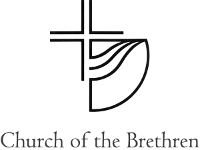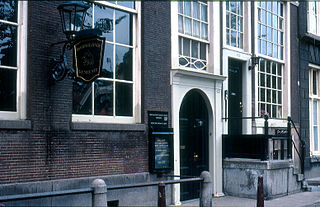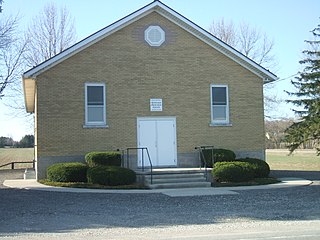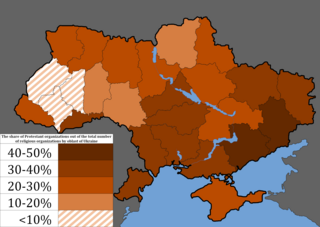
Mennonites are a group of Anabaptist Christian communities tracing their roots to the epoch of the Radical Reformation. The name Mennonites is derived from the cleric Menno Simons (1496–1561) of Friesland, part of the Holy Roman Empire, present day Netherlands. Menno Simons became a prominent leader within the wider Anabaptist movement and was a contemporary of Martin Luther (1483–1546) and Philip Melanchthon (1497–1560). Through his writings about the Reformation Simons articulated and formalized the teachings of earlier Swiss Anabaptist founders as well as early teachings of the Mennonites founded on the belief in both the mission and ministry of Jesus. Formal Mennonite beliefs were codified in the Dordrecht Confession of Faith (1632), which affirmed "the baptism of believers only, the washing of the feet as a symbol of servanthood, church discipline, the shunning of the excommunicated, the non-swearing of oaths, marriage within the same church", nonresistance, and in general, more emphasis on "true Christianity" involving "being Christian and obeying Christ" as they interpret it from the Holy Bible.

The Church of the Brethren is an Anabaptist Christian denomination in the Schwarzenau Brethren tradition that was organized in 1708 by Alexander Mack in Schwarzenau, Germany during the Radical Pietist revival. The denomination holds the New Testament as its only creed. Historically, the church has taken a strong stance for nonresistance or Christian pacifism—it is one of the three historic peace churches, alongside the Mennonites and Quakers. Distinctive practices include believer's baptism by forward trine immersion; a threefold love feast consisting of feet washing, a fellowship meal, and communion; anointing for healing; and the holy kiss. Its headquarters are in Elgin, Illinois, United States.

The Evangelical United Brethren Church (EUB) was a North American Protestant denomination from 1946 to 1968 with Arminian theology, roots in the Mennonite and German Reformed communities, and close ties to Methodism. It was formed by the merger of a majority of the congregations of the Evangelical Church founded by Jacob Albright and the Church of the United Brethren in Christ. The United Brethren and the Evangelical Association had considered merging off and on since the early 19th century because of their common emphasis on holiness and evangelism and their common German heritage.
The Church of God in Christ, Mennonite, also called Holdeman Mennonite, is a Christian Church of Anabaptist heritage. Its formation started in 1859 under its first leader, a self-described prophet named John Holdeman (1832–1900), who was a baptized Mennonite. The Church of God in Christ, Mennonite is Conservative Mennonite that has distanced itself from other Conservative Mennonites because of its one true church doctrine. In 2021, the church claimed to have 27,118 baptized members.
The Evangelical Mennonite Conference is a conference of Canadian evangelical Mennonite Christians headquartered in Steinbach, Manitoba, with 62 churches from British Columbia to southern Ontario. It includes people with a wide range of cultural and denominational backgrounds.

Mennonite Church Canada, informally known as the General Conference, is a Mennonite denomination in Canada, with head offices in Winnipeg, Manitoba. It is a member of the Mennonite World Conference and the Evangelical Fellowship of Canada.

The Mennonite Church in the Netherlands, or Algemene Doopsgezinde Sociëteit, is a body of Mennonite Christians in the Netherlands. The Mennonites are named for Menno Simons (1496–1561), a Dutch Roman Catholic priest from the province of Friesland who converted to Anabaptism around 1536. He was re-baptized as an adult in 1537 and became part of the Dutch Anabaptist movement.

The Mennonite Church USA is an Anabaptist Christian denomination in the United States. Although the organization is a recent 2002 merger of the Mennonite Church and the General Conference Mennonite Church, the body has roots in the Radical Reformation of the 16th century.

The Russian Mennonites are a group of Mennonites who are the descendants of Dutch and North German Anabaptists who settled in the Vistula delta in West Prussia for about 250 years and established colonies in the Russian Empire beginning in 1789. Since the late 19th century, many of them have emigrated to countries which are located throughout the Western Hemisphere. The rest of them were forcibly relocated, so very few of their descendants currently live in the locations of the original colonies. Russian Mennonites are traditionally multilingual but Plautdietsch is their first language as well as their lingua franca. In 2014, there were several hundred thousand Russian Mennonites: about 200,000 live in Germany, 74,122 live in Mexico, 150,000 in Bolivia, 40,000 live in Paraguay, 10,000 live in Belize, tens of thousands of them live in Canada and the US, and a few thousand live in Argentina, Uruguay, and Brazil.

The Mennonite Church (MC), also known as the Old Mennonite Church, was formerly the oldest and largest body of Mennonites in North America. It was a loosely-affiliated collection of Mennonite conferences based in the United States and Canada, mainly of Swiss and South German origin. The group dated to the settlement of Germantown in 1683 and included 112,311 members in North America in 1997. Many of the conferences that were considered part of the Old Mennonite Church participated in the Mennonite General Conference from 1898-1971 and the Mennonite General Assembly from 1971-2002. The Mennonite General Assembly voted to merge with the General Conference Mennonite Church at a joint session in Wichita, Kansas, in 1995. In 2002, the two groups merged and then divided along national lines into Mennonite Church USA and Mennonite Church Canada.

Virginia Mennonite Conference is a body of Mennonite churches in the south-Atlantic region of the United States, consisting of Virginia, North Carolina, West Virginia, Tennessee and Kentucky and the city of Washington, D.C. There are 60 congregations in the Conference, and a number of congregations in formation without full membership status. As one of the regional Conferences of Mennonite Church USA, the congregations belong to nine Districts: Calvary, Central, Eastern (VA), Harrisonburg, Northern, Potomac, Southern, and Tennessee/Carolina/Kentucky.
Amish Mennonites came into existence through reform movements among North American Amish mainly between 1862 and 1878. These Amish moved away from the old Amish traditions and drew near to the Mennonites, becoming Mennonites of Amish origin. Over the decades, most Amish Mennonites groups removed the word "Amish" from the name of their congregations or merged with Mennonite groups.
John H. Oberholtzer was a North American Mennonite leader who advocated for Mennonite cooperation for the purpose of higher education and mission work. He provided key leadership during the formation of the General Conference Mennonite Church.

The General Conference Mennonite Church (GCMC) was a mainline association of Mennonite congregations based in North America from 1860 to 2002. The conference was formed in 1860 when congregations in Iowa invited North American Mennonites to join together in order to pursue common goals such as higher education and mission work. The conference was especially attractive to recent Mennonite and Amish immigrants to North America and expanded considerably when thousands of Russian Mennonites arrived in North America starting in the 1870s. Conference offices were located in Winnipeg, Manitoba and North Newton, Kansas. The conference supported a seminary and several colleges. In the 1990s the conference had 64,431 members in 410 congregations in Canada, the United States and South America. After decades of cooperation with the Mennonite Church, the two groups reorganized into Mennonite Church Canada in 2000 and Mennonite Church USA in 2002.

The Reformed Mennonite Church is a Conservative Anabaptist denomination of Christianity that officially separated from the main North American Mennonite body in 1812.

Franconia Mennonite Conference was a conference of Mennonite Church USA based in Lansdale, Pennsylvania, with 45 congregations in Pennsylvania, New Jersey, Vermont, New York and California and 19 conference related ministries. In February 2020, Franconia Mennonite Conference merged with Eastern District Conference to become Mosaic Mennonite Conference. It is a member of Mennonite World Conference.

Protestants in Ukraine number about 600,000 to 700,000 (2007), about 2% of the total population. Nearly all traditional Protestant denominations are represented in the country. According to Christianity Today magazine, Ukraine has become not just the "Bible Belt" of Eastern Europe, but a "hub of evangelical church life, education, and missions". At present, the country is a key supplier of missionaries and a center of evangelical training and press printing for all the countries of the former Soviet Union, where the legal environment is not so favourable.
Conservative Mennonites include numerous Conservative Anabaptist groups that identify with the theologically conservative element among Mennonite Anabaptist Christian fellowships, but who are not Old Order groups or mainline denominations.
Emma Elizabeth Richards was the first Mennonite woman to be ordained as a pastor of a Mennonite congregation.
The Eastern Pennsylvania Mennonite Church and Related Areas is a Church of Conservative Mennonites organized in 1969 as conservatives withdrew from the Lancaster Mennonite Conference. As of 1996 it was the largest Conservative Mennonite group.












